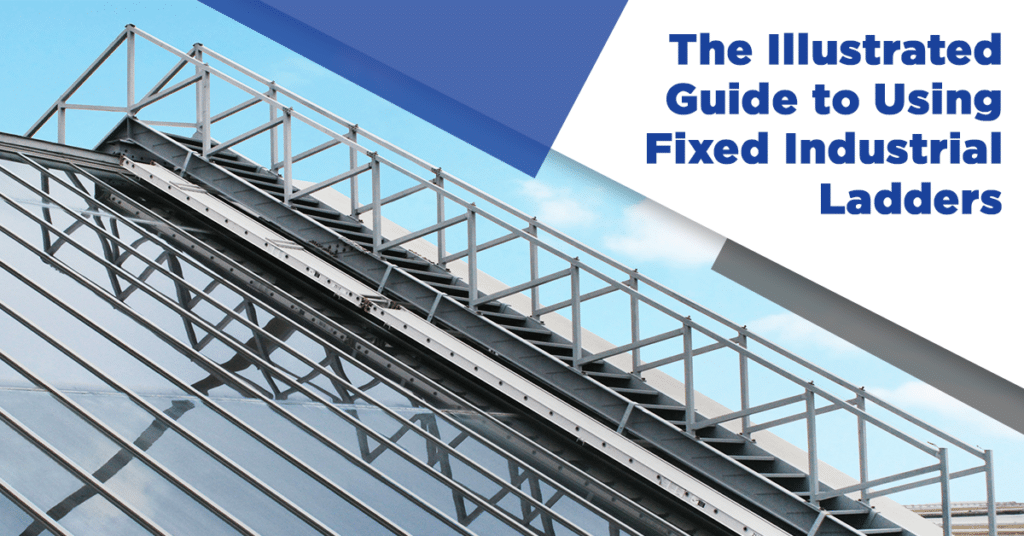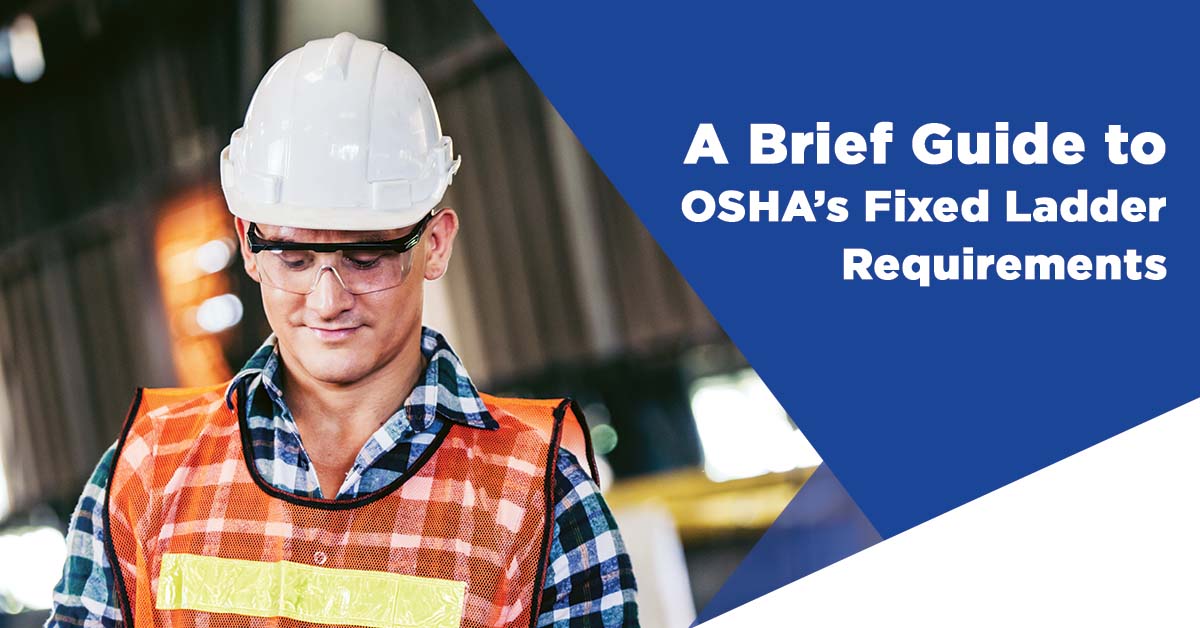
Having the right tools makes work a lot easier, and for handypersons, fabricators, and other professionals working in various industries, this saying is highly relevant. No matter what the project may be, having the right equipment is essential because it allows workers to perform at their best.
Whether you’re running a manufacturing, commercial or industrial facility or have employees regularly accessing dangerous areas, having high-quality industrial ladders is an absolute must. Other than keeping your workers safe, investing in reliable pieces will assist your employees with any kind of manual work or task.
Fortunately, fixed ladder providers are highly flexible and are fully aware that each customer has their own unique needs. Depending on your preference, requirements, and budget, manufacturers offer specialized products to suit different applications.
If you’re looking to purchase or upgrade a fixed ladder for your company, let this guide teach you everything you need to know.
What is a Fixed Industrial Ladder?
Fixed industrial ladders are metal-based tools that are permanently installed within a structure. They are used for various applications such as accessing high areas of the buildings, descending to manholes in factories, and more. Made from durable materials, these fixed ladders provide easy access and minimize the risk associated with climbing heights.
4 Types of Fixed Industrial Ladders
First things first—you have to identify which kind of industrial ladder your business needs. Several types of fixed industrial ladders are available in the market to choose from, all of which are designed for a specific purpose. To help you determine the best purchase possible, let’s discuss the four types you can avail of.
1. Access ladders
Access ladders are the best choice for safe and reliable access to high elevations like rooftops, mezzanines, and loading docks. Constructed from lightweight, corrosion-resistant, and low-maintenance aluminum, purchasing one is guaranteed to bring maximum strength and safety to work.
Before you install fixed access ladders in your building, there are a few things to keep in mind. The accessibility, functionality, and expected maintenance of your choice are something to consider.
Access ladders are customizable, so feel free to modify them to fit your space and requirements best. To make the most of your purchase, ensure that your ladder is built to withstand rust and corrosion. Doing this will keep maintenance costs to a minimum. This is where choosing aluminum over steel ladders can be very beneficial.
There are also various ladder safety attachments and accessories that you can use depending on your needs. This includes safety posts, fall arrests, landing platforms, security doors, and more.
2. Ship ladders
If you’re working on a limited space, ship ladders are angled tools that can help you get the job done. According to the Occupational Safety and Health Administration (OSHA) and International Building Code standards, they are steeper than the typical 45-degree and 30- to 32-degree angles of stairs.
Some ship ladders typically have a 60- or 75-degree slope, equipped with treads, stair rails, and open rises. Just like access ladders, this type of ladder is also designed for maximum safety, comfort, and support. Custom slopes are also available by contacting the manufacturer. When taking your pick, go for a ship ladder made from heavy-duty aluminum that is lightweight, corrosion-resistant, and maintenance-free.
3. Cage ladders
When your ladder application exceeds 20 feet, selecting cage ladders will ensure that none of your employees will get hurt while working. Its built-in fall protection system provides a level of safety that meets OSHA standards and promises efficiency in accomplishing tasks.
Take note that fixed cage ladders should be fabricated with an ergonomic design. As it’s commonly used for greater heights, you want to make sure that the quality of your ladder can give both security and comfort to your workers under any climbing conditions.
Choose materials that are not subject to corrosion to avoid any safety issues or extra maintenance work in the future.
4. Custom ladders
If fixed access, ship, or cage ladders aren’t cut for the job and your facility requires more than a piece of standard aluminum equipment, opt for custom products to specifically support your workers and their workload.
Whether platforms, stairs, ramps, or catwalks, secure a custom ladder that can best suit your business functions and needs. Remember to find a tailor-made alternative manufactured from durable stainless or galvanized steel that will warrant overall safety and comfort for its users.
5 Safety Precautions When Using Fixed Ladders
When it comes to injuries and accidents, the safety measures you’ve placed will serve as your main line of defense. Now that you know the various types of fixed ladders, let’s review how you can keep ladder-related incidents at bay.
1. Inspect for damages before use
Before finalizing your purchase, check your ladder for any loose or damaged parts. You want to make sure that your order is functioning as it should without any defects. Should there be issues present, report them to the manufacturer and have them fixed immediately.
2. Cancel work in high elevation during bad weather
While fixed industrial ladders come with maximum protection for their users, it’s better to be safe than sorry. When working outdoors in inclement weather, postpone any ladder-related endeavors for the time being—climbing beyond 20 feet while it’s raining increases the risk of accidents that may lead to permanent disability or death.
3. Wipe away any slippery substance on the ladder and your clothes
Before you climb, it’s vital that you get rid of anything that may cause a delay or, worse, an accident during the ascent. Be sure to clean the ladder and your attire from any slippery or oily substance. As much as possible, avoid wearing a pair of gloves or shoes that are oversized, have a slippery base, or are wet.
4. Climb and descend properly
When accessing maintenance rooms in roofs, one wrong step is all it takes to cause a mishap. Practice care and patience when ascending or descending and don’t forget to utilize your ladder’s guard rails. In case you don’t feel well, take a break before you start climbing again.
5. Limit access to authorized personnel only
In an organization, rules and regulations on equipment access are necessary to prevent any predicament during operations, including the use of industrial ladders. Only grant access to qualified employees who have passed safety training or acquired direct permission from you. If needed, you can also place sanctions or lock your ladders when not in use.
Take the Step for an Easier and Safer Way of Work
The right tools and equipment should improve work in two ways. They should make it both easier and safer—no more, no less.
A fixed industrial ladder hits two birds with one stone for different industries as it boosts workers’ efficiency and safety at the same time. So, if you want to get the best one for your business, check out our collection of industrial ladders here at O’Keeffe’s.
With over 80 years of experience in the engineering and manufacturing industry, we are confident that our solutions will satisfy your business needs. Expertly designed by our seasoned engineers, our fixed aluminum ladders suit various applications and guarantee your safety every step of the way.
To learn more, contact O’Keeffe’s and request a quote today!

Recent Comments